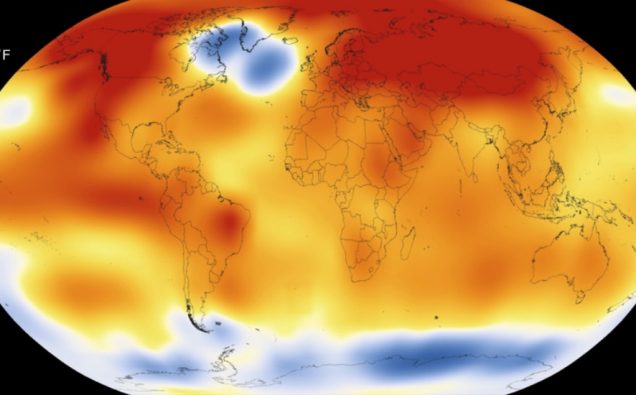
The 2016 election season in the United States may be getting hotter with each passing day but sweltering summer in several parts of the world is into an unprecedented streak of high temperatures, raising alarm for things to come.
While Americans and the world watch intently the outcome of the unusually heated presidential campaign, the Earth and its environment are constantly reminding Washington and other world capitals that the new US president will have to address the issue of global warming as a matter of national security interest.
The mercury has been rocketing in several parts of the world, although people in Washington metro area may not be feeling the same hot weather after a wet mild May.
But meltdown of glaciers, ocean warming, frequent flooding, raging fires, droughts and storms across continents could not have been more glaring in their scope and intensity as threats to survival of the planet and its people.
Meanwhile, Republican likely presidential candidate Donald Trump has told his supporters that he would shred apart the international agreements the United States is a party to as part of efforts to stem further climate degradation.
Last week World Meteorological Organization said global temperature records were broken yet again in April for the 12th consecutive month, the longest such streak since global record-taking began in 1880.
Here is a look at some startling revelations:
Overall, 13 out of the 15 highest monthly temperature departures in the record have all occurred since February 2015, with the combined average temperature over global land and ocean surfaces for April 2016 measured at 1.10 degrees Celsius above the 20th century average of 13.7 degrees Celsius – the highest temperature departure since in the 137-year record of the United States National Oceanic and Atmospheric Administration, WMO said.
“Another month, another record,” said WMO Secretary-General Petteri Taalas.
But what is causing the mercury to shoot up?
“The extraordinary heat that was recorded in 2015 pales by comparison to 2016. It is a combined effect of climate change and El Niño,” says Taalas.
Meanwhile, the El Niño is “fading fast” and will probably give way later this year to La Niña but any cooling effect from La Niña will be temporary, according to the official.
That cooling effect will not be enough to rein in the global warming from greenhouse gases.
“The rapid implementation of the Paris Climate Change agreement is taking on the utmost urgency, if the ambitious 1.5-2.0 degree Celsius targets would be reached,” he stressed.
It is for the first time ever that carbon dioxide concentrations in the southern hemisphere have joined those in the northern hemisphere and passed the 400 parts per million (ppm) level, according to Taalas they are likely to stay there.
“This is more than just a symbolic threshold. At the current rate of increase in CO2 levels, we are on track to reach the 2 degrees Celsius temperature limit within the next two generations.”.
Effects have been reported from all around.
Measurements at Cape Grim on Tasmania’s northwest coast reached the 400 ppm milestone on 10 May and at Casey Station in Antarctica on 14 May, according to the Commonwealth Scientific and Industrial Research Organisation and the Bureau of Meteorology of Australia. The stations form part of WMO’s Global Atmosphere Watch network, which spans 100 countries, including stations high in the Alps, Andes and Himalayas, as well as the Arctic and Antarctic, a UN news report says.
CO2 concentrations over the southern hemisphere are trailing those in the planet’s northern half, where 400 ppm level was breached in 2014-15, WMO said.
It is no secret, as also pointed out by the agency, human activity has increased the direct warming effect of CO2 in the atmosphere by 50 per cent above pre-industrial levels during the past 25 years, according to the U.S. National Oceanic and Atmospheric Administration’s 10th Annual Greenhouse Gas Index.
According to the Administration’s monthly temperature report, much of Russia and Alaska witnessed temperatures of at least 3.0 degrees Celsius or greater above average. South America, Africa and Asia (with an exceptional heatwave in Southeast Asia) also had record high average temperatures.
WMO says the globally averaged sea surface temperature for April was 0.80 degrees Celsius above the 20th-century monthly average – the highest on record.
According to data from the United States National Oceanic and Atmospheric Administration (NOAA) analyzed by the Rutgers Global Snow Lab, the Northern Hemisphere snow cover extent during April was 890,000 square miles below the 1981-2010 average. This was the smallest April Northern Hemisphere snow cover extent in the 50-year period of record, says WMO.
But the question surrounding the heat of the moment : Will the latest evidence of links between climate change and hotter summers and warmer winters and between the climate change and human activity effect a change of heart and make world leaders fix the wrongs all of us have done to the environment?














